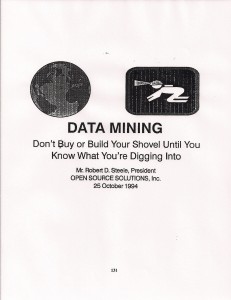
It was a privilege to be asked by the National Research Council to comment on the U.S. Army's multi-billion dollar future communications architecture. I noticed immediately that the entire program assumed self-generated bits and bytes and made no provision, ZERO PROVISION, for acquiring and making sense of external information from anyone outside the DoD “grid.”
As a Marine familiar with how our arriving Marines could not communicate with the US Embassy they were coming to save, and as a CEO newly familiar with the plethora of open sources relevant to the real world of operations other than war (OOTW) and what is now called Irregular Warfare (IRWF), I considered my contribution valuable.
They did not. As with all other early warnings from myself and many others in the 1980's and 1990's, “the Borg” just kept on marching along, oblivous to the real world and the known future requirements.
PDF (18 Pages): 1994 NRC Army Communications
Full Briefing Below the Line
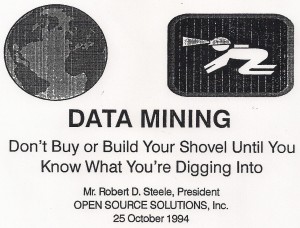
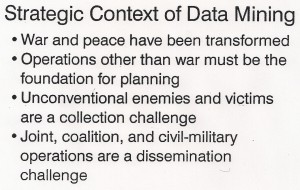
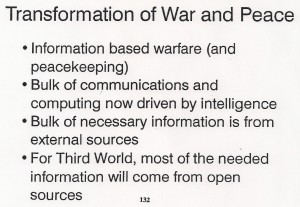
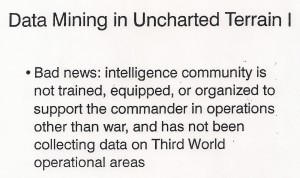
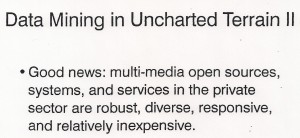
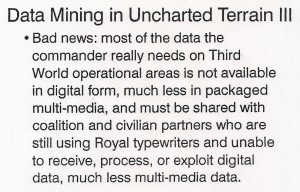
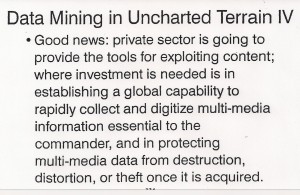
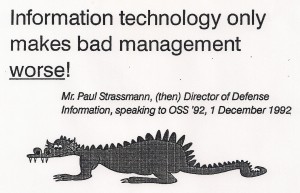
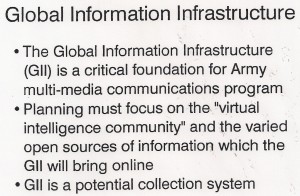
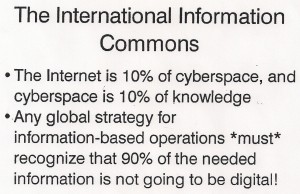
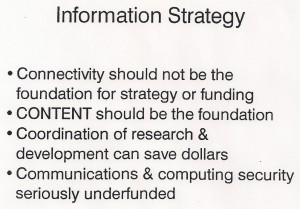
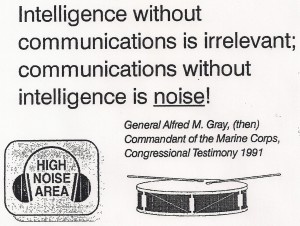
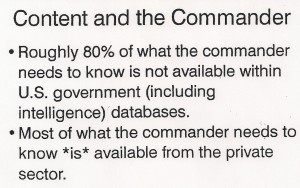
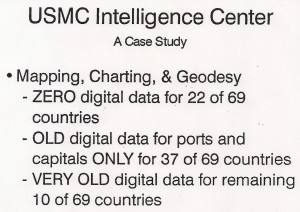
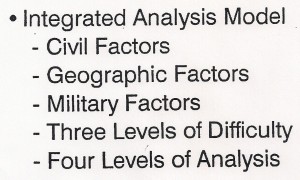
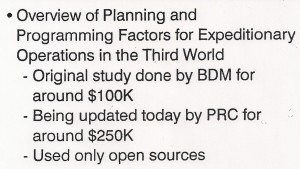
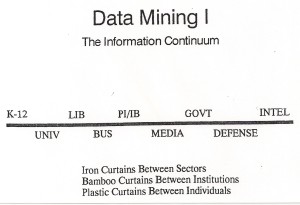
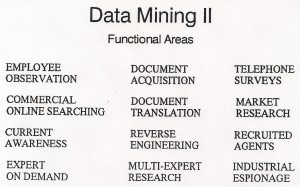
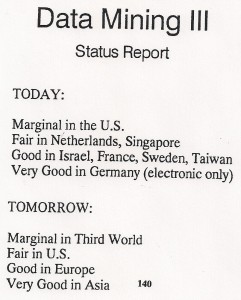
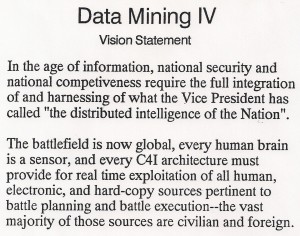
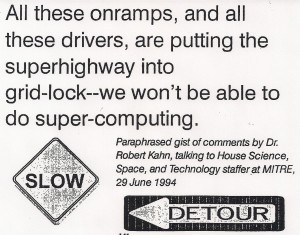
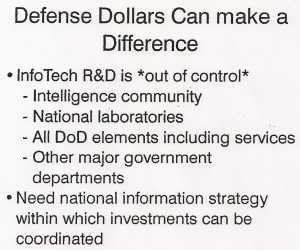

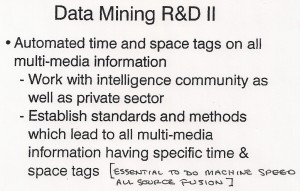
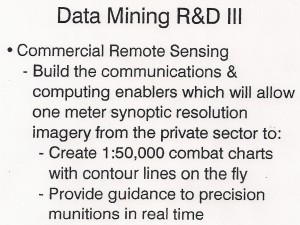
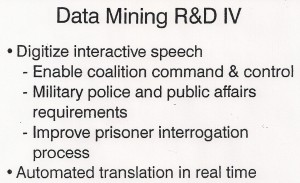
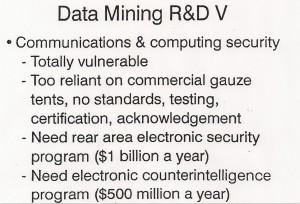
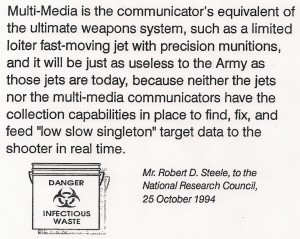
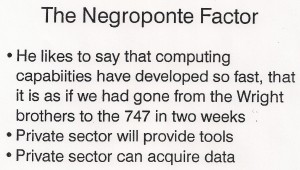
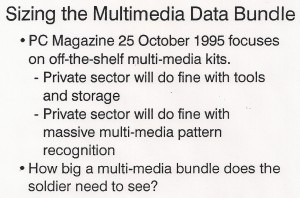
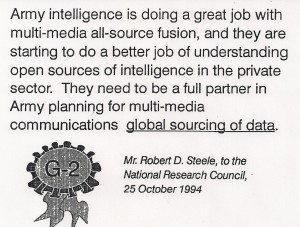

Phi Beta Iota: It is with real sadness that we observe how so many of the C4I recommendations made in the early 1990's for the future are still valid today, i.e. precisely the same deficiencies continue to exist, they just cost a great deal more to ignore. It's never too late to do the right thing.
See Especially:
2014 Robert Steele: Appraisal of Analytic Foundations – Email Provided, Feedback Solicited – UPDATED
1990 Expeditionary Environment Analytic Model
Mini-Me: US Army DCGS-A Failures — and Palantir Keeps Trying to Over-Sell Its Shallow Pit
Robert Steele: Why Big Data is Stillborn (for Now) + Comments from EIN Technical Council
See Also:
Paul Strassmann @ Phi Beta Iota
2014 Intelligence Reform (Robert Steele)
1976-2013: Analytic, Methodological, & Technical Models 2.1



